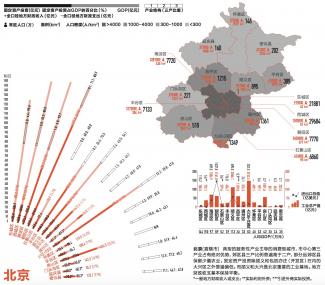
Mapping China: Urbanisation - 2 Regional Cities and City-Regions
Mapping China: Urbanisation - 2 Regional Cities and City-Regions
The urbanisation of China has created some of the world’s biggest city-regions. As many have argued, the global decentralisation of governance has enabled the power of the city-regions, causing them to play a decisive role in national development. This is very challenging to the local planning authorities, because the dynamics of the city-region demand a very responsive governing mechanism, and its polycentric nature requires solid connectivity and coordination.
The idea of encouraging urban agglomeration from the central policy level was raised in China as early as 1995. To some professionals, it was the best solution for improving the economic efficiency of the urban environment. More than ten city-regions were nominated to carry out further development with such ideas. Ideally, cities and towns of different scales within the city-regions would play their respective roles and form a sustainable and powerful engine for national redevelopment.
Years have passed and urban governance in China has gone through transformations. Several city-regions are now recognised as the country’s leading urban centres. Within these dynamic city-regions, places have connected and merged without distinct physical boundaries, and integrated social and economic identities are being generated. These city-regions, whether driven by top-down planning forces or local urban entrepreneurialism, have created another perspective for reading the urbanisation in China.


